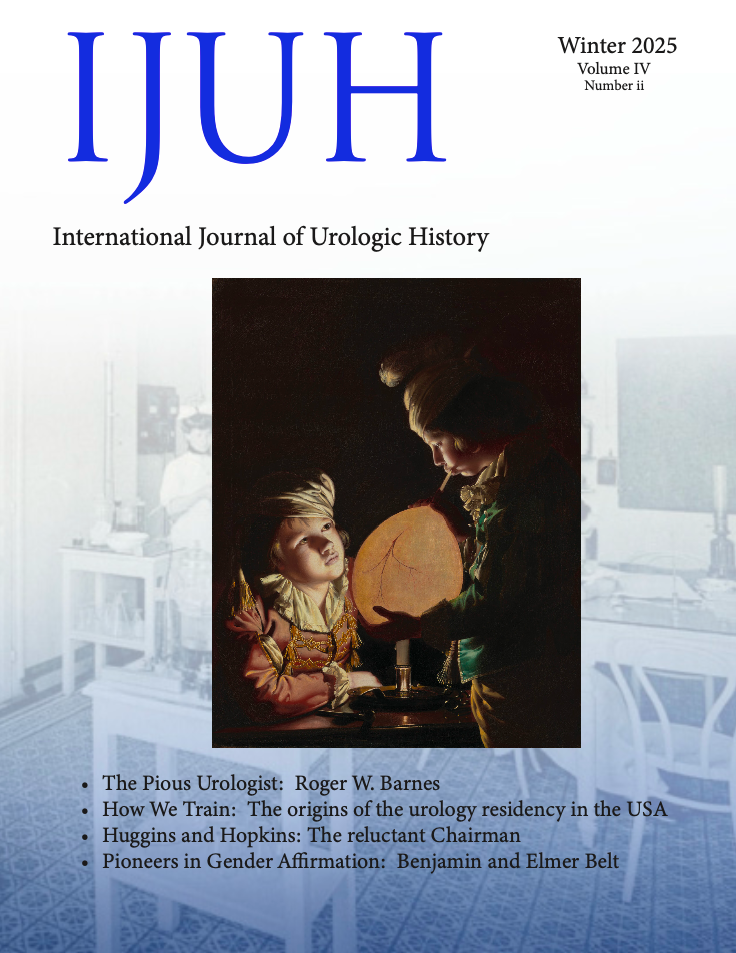Volume 4, Issue 1 Foreward
Eponyms have had a curious staying power in medicine. Hours of useful time in medical school have been spent memorizing what differentiates Cushing’s syndrome from disease, what runs through Alcock’s canal, and what UPJ obstruction requires an Anderson-Hynes versus a Culp-Deweerd versus a Scardino robotic pyeloplasty.
Many eponyms have gratefully become extinct as examples of bygone days in which the focus was to pay homage to a person who first diagnosed a disease rather than on the person suffering from it.(1) Other eponyms have rather sinister histories and their continued use may pay a kind of homage to physicians of the past where no homage is due.
Some have argued that instead of invoking the names of (Hans) Asperger, (Julius) Reiter, and (Friederich) Wegener, all members or supporters of the Nazi regime, we should simply stick to the medical facts, and diagnosis a patient who may suffer from autism spectrum disorder, reactive arthritis with lower urinary tract symptoms, or granulomatosis with polyangiitis, respectively.(2-4)
Surgical instruments, however, are a different matter and both surgeon and nurse know exactly what to expect when a Foley catheter, a Kelly clamp, an Adson forceps, or a Bookwalter retractor are required. These eponyms are so ingrained into the canon of surgical vernacular that few take the time to explore the innovators whose names we invoke.
Deal et al. from Columbia, South Carolina explore the life of the Philadelphia surgeon John B. Deaver who, despite enormous contributions to education and surgery in the early 20th century, is remembered now only for the humble retractor that bears his name.(5)
Similarly, Jain et al. from Ontario, Canada describe how the Otis, Maisonneuve, and Sachse urethrotomes came to be (and thankfully are no longer) over a 2600 year timeline of urethral stricture disease and its human toll.(6)
The name of the 18th century fraudster, F.A. Mesmer, has achieved an eponymous infamy far beyond medicine, so much so that he has become a verb. Herr from New York explores the debunking of Mesmer’s claims by Benjamin Franklin and colleagues through double-blind, placebo controlled trials that presaged modern clinical experimentation.(7)
Franklin himself was disappointed that his bladder stones could not be ‘mesmerized’ but he also appreciated that some suffering may be relieved through unexplained natural, or supernatural, processes.
Similarly, Xu and Devon from Boston Massachusetts examine how sufferers of testicular and groin ailments in 7th century Byzantium sought divine relief when traditional practitioners came up short.(8)
Stump et al. from Nashville, TN remind us that eponyms in pathology have also been shelved so that cancers can be rightfully described through the microscope and not after an early discoverer who probably didn’t quite know what they were looking at.(9)
